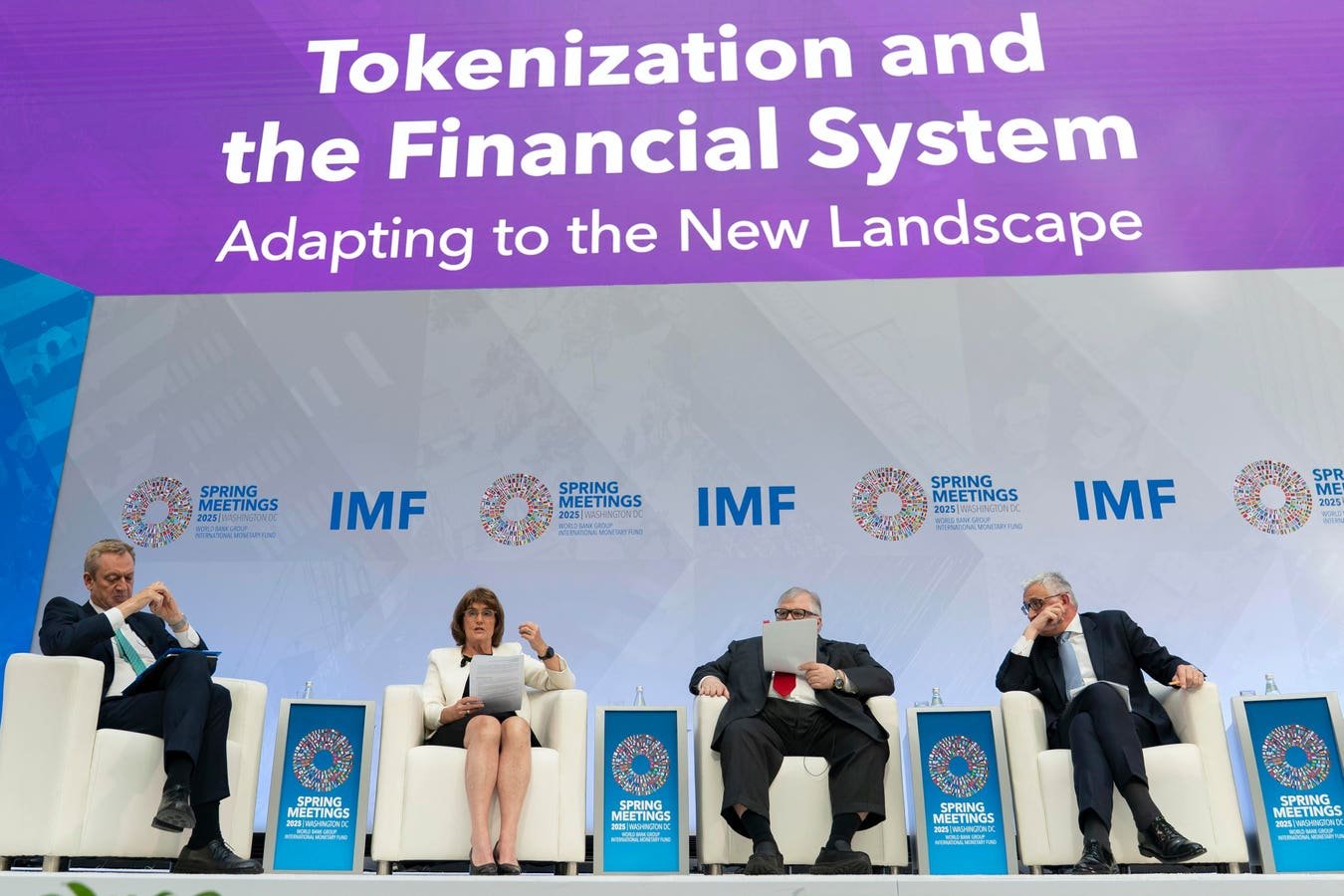Tokenization and the Financial System Forum during the World Bank/IMF Spring Meetings at the … More
When Mantra’s $OM token crashed in the start of April, crypto skeptics had their moment. Another real-world assets (RWAs) blockchain project bites the dust, they said. Traditional finance would surely retreat from tokenization experiments. The crash wiped out millions in value overnight, adding to the long list of crypto’s cautionary tales.
Then, something strange happened. The money kept flowing in, but not to speculative tokens. Instead, it flowed to RWAs on the blockchain. BlackRock continued building. Franklin Templeton doubled down.
By April, total value locked (TVL) in tokenized assets crossed the $20 billion mark. While experts speculated the Mantra collapse would scare institutions away, it showed them exactly what not to do.
Asset managers discovered something valuable in blockchain’s infrastructure. They began moving Treasury bills, rental income, and private credit onto chains. Global markets used to run on these fundamental assets. And now they run faster.
The Infrastructure Race
Institutional adoption brings new demands for blockchain infrastructure. Zero Hash exemplifies this shift, processing over $2 billion in tokenized fund flows across 22 blockchains in just four months. Their rails now support seven different stablecoins, powering settlements for giants like BlackRock and Franklin Templeton.
Regulatory compliance drives innovation, too. Chintai secured licenses from Singapore’s MAS for compliant issuance and trading. Their Nexus platform now handles $675 million in tokenized value, with ambitious plans to reach $10 billion this year. The focus on regulation attracts serious institutional capital — their recent partnerships with RealNOI bringing $570 million in rental income on-chain and Kin Capital’s tokenized $100M real estate debt fund are just a few examples.
It’s these infrastructure providers that lay the groundwork for specialized innovation.
Bridging Two Worlds
Money market funds move trillions of dollars daily through global markets. These funds form the backbone of institutional cash management, yet they still settle through systems designed decades ago. Franklin Templeton saw an opportunity to change this.
Jiritsu’s $JUSD stablecoin launch on BNB Chain started modestly — just $1 million in TVL — but brought something new to market. Their MintBurn system provides real-time proof of reserves, letting users verify their backing at any moment. The stablecoin draws its stability from Franklin Templeton’s BENJI U.S. Money Market Fund, creating a bridge between traditional finance and blockchain efficiency.
Traditional stablecoins rely on monthly attestations, while Jiritsu’s system updates these proofs continuously. Users see exactly what backs their assets and when those assets move.
No more waiting for monthly reports or trusting third-party auditors.
The project’s second phase aims beyond simple scaling. Its permissionless framework could allow any regulated fund to bring assets on-chain using the same infrastructure. For instance, money market funds represent a $7 trillion market globally. Just moving even a fraction of that onto blockchain infrastructure could reshape institutional cash management.
Market Makers Move In
While it’s true that tokenized assets require lots of infrastructure, they also need liquidity. Major market makers spotted this opportunity early. Jane Street began providing liquidity for BlackRock’s tokenized funds in February. Citadel Securities launched a dedicated digital asset desk focusing exclusively on regulated, tokenized securities. That means traditional finance wants to shape how these assets trade.
And the performance data backs their interest. RWA tokens weathered recent market volatility better than their purely crypto counterparts. CHEX, powering Chintai’s regulated platform, maintained stability during the March downturn. The token’s value reflects growing institutional confidence in regulated tokenization platforms.
Beyond Traditional Assets
Innovation spreads beyond conventional financial instruments. RealNOI and Kin Capital’s partnerships with Chintai demonstrates the potential for alternative income streams. Their platform tokenizes rental income from 1,900 apartments, offering investors exposure to real estate cash flows without the burden of property management. Projected annual returns above 5% attracted both crypto natives and traditional real estate investors.
Other experiments push boundaries further. Republic’s private credit platform brought traditionally illiquid loans on-chain. Zero Hash expanded beyond simple settlement, building specialized rails for dividend distributions and corporate actions. Each successful implementation creates a template for other institutions to follow.
Sector Challenges and Resilience
The Mantra collapse shook market confidence in March. Excessive leverage had amplified volatility, triggering a wave of liquidations across the platform. Beyond immediate losses, the incident forced hard questions about risk management in RWA protocols.
Market data reveals broader sector resilience. Through April, Maple Finance saw institutional deposits climb steadily. Their focus remained simple: conservative lending backed by verified assets. Circle’s USDC expanded into settlement layers for tokenized securities. Even BlackRock pushed forward with their BUIDL initiative, treating Mantra’s troubles as an isolated case.
This resilience stems from fundamental differences in RWA tokens. Real assets generate actual cash flows. Treasury yields arrive on schedule. Rental income flows monthly. These are productive assets made more efficient through tokenization, and that’s why big institutions continue to back them.
Looking Forward: Regulation and Growth
Regulatory frameworks for tokenized assets evolve unevenly across markets. Singapore’s MAS cleared the path with precise guidelines. Hong Kong welcomed tokenized funds with open arms. The U.S. SEC moves cautiously but steadily, evaluating each regulated tokenization proposal.
Technical innovation has evolved hand-in-hand with regulatory progress, transforming compliance processes into automated systems. Verification systems deliver transparency without compromising security. These advances streamline institutional participation while maintaining regulatory standards.
The impact of these changes becomes clearer each month.
Traditional finance and blockchain efficiency draw closer each month. Banks reimagine settlement through tokenization. Asset managers experiment with programmable securities. Trading desks adapt to handle digital assets. Every step forward cements RWAs as crucial components of tomorrow’s financial infrastructure.




